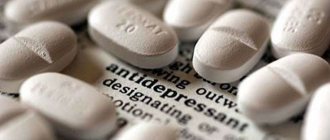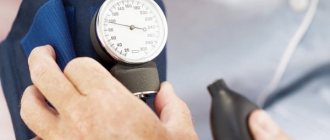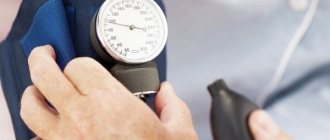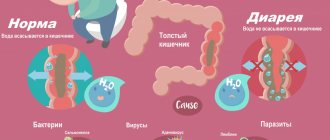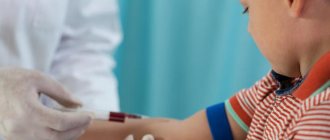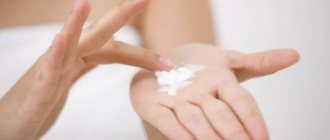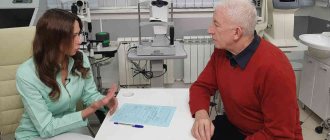Pulse is the number of heart beats in a certain time interval, usually per minute. Throughout life, this indicator constantly changes. Its highest value is observed in newborns and averages 140 beats per minute. This is due to the fact that metabolic processes in infants proceed faster, and the walls of blood vessels have the greatest elasticity. Then this figure begins to gradually decrease and by the age of 15 it approaches the mark of 60-80 beats per minute.
In old age, due to the fact that malfunctions appear in the body's functioning, the heart rate increases slightly. Normally, the heart rate of an elderly person at rest should be 60-90 beats.
However, during the day these numbers can fluctuate noticeably, since heart rate is not a constant value and depends on many factors.
How to measure your pulse correctly?
Elderly people are recommended to measure their pulse daily, at the same time of day. This will help to detect deviations in time and take appropriate measures. It is best to take measurements before noon, between meals and always at rest. To do this, you should take a comfortable position or lie down for 10-15 minutes before starting measurements, excluding any stress. Alcohol and medications are not allowed before the procedure.
Measurements can be taken independently or using an automatic tonometer. Self-measurements of the pulse are best carried out in the submandibular region, where the carotid artery lies. The optimal time to measure your pulse is 60 seconds.
Blood pressure norms for adults
According to WHO, normal human blood pressure ranges from 100/60 to 140/90 units, while the optimal values, regardless of age, are suggested to be between 110/70 and 130/80 mm. Hg Art.
In Russia, it is customary to correlate blood pressure figures with age, and optimal pressure is regarded as the norm only for young and healthy people. This is, in fact, correct, since from birth to old age changes in the wall of blood vessels are inevitable; in addition, somatic diseases occur, blood viscosity changes - all this affects the systolic and diastolic blood pressure, the level of which determines a person’s well-being.
Upper or systolic blood pressure (SBP) is a marker of heart function, lower or diastolic blood pressure (DBP) is a marker of blood vessels. Since the physiological characteristics of a person, his anatomical structure are unique, the pressure of each of us is individual. In youth, the potential abilities of self-regulation are preserved, which help to cope with overwork, overstrain, climate change, colds, maintaining blood pressure at a normal, comfortable level.
High and low heart rate in older people
If you are systematically bothered by a rapid or, on the contrary, low pulse, and it has nothing to do with physical or emotional stress, climatic conditions, nutrition, or excess weight, this is a reason to consult a doctor and undergo an examination.
If the pulse values of an elderly person go beyond the upper normal limits, then they speak of tachycardia - rapid heartbeat. If, in a calm state, the heart rate in elderly people is below 60 beats per minute, they speak of bradycardia - low heart rate. Tachycardia and bradycardia are not independent diseases; they are only symptoms signaling that a pathological process is occurring in the body.
There are a number of diseases that are characterized by pulse deviations from normal values. Tachycardia is a companion to chronic heart failure, hypertension, heart defects, inflammatory heart diseases, as well as ailments not associated with disruption of the heart muscle: anemia, endocrine diseases, adrenal tumors, dehydration, diseases of the nervous system, psychosis.
Tachycardia can also be provoked by high body temperature, as well as certain medications, for example, vasoconstrictors, diuretics, and sedatives.
Bradycardia accompanies diseases such as myocardial pathologies, coronary heart disease, hypothyroidism, poisoning, infectious diseases, and brain tumors.
In order to detect and begin treatment of dangerous ailments in time, older people need to regularly, at least once a year, have an ECG, and in the presence of cardiovascular diseases, additionally echocardiography, Holter monitoring, ultrasound of the thyroid gland and carotid artery, urinalysis, general and biochemical tests are indicated blood tests.
Measurement
Pulse measurement is usually performed at the wrist. It is enough for a person to count the number of pulse waves in 1 minute. To obtain more accurate data, it is recommended to take measurements on both limbs. As a comprehensive examination in a hospital setting, the doctor will first find out the heart rate, then he will count the number of respiratory movements (RR) in 1 minute and determine the type of breathing. The resulting indicator is especially important for assessing the child’s development.
When measuring your pulse, you need to pay attention to its rhythm. The shocks should be of equal strength and at equal intervals of time. If there are no deviations, it is enough to spend 30 seconds on the procedure, and then multiply the result by 2. If a clear disturbance in the heartbeat is detected, it is better to spend at least 1 minute on the measurement and consult a doctor. The specialist will prescribe instrumental examination methods. The main one among them is electrocardiography (ECG). It will allow you to evaluate the electrical activity of the heart and identify the causative factor of arrhythmia. As a supplement, the following tests are prescribed:
- Daily ECG monitoring will allow you to see changes in heart function throughout the day under the influence of various factors.
- A treadmill test is prescribed to assess heart rate under the influence of physical activity.
Due to problems with blood vessels or injuries, it is sometimes necessary to count pulse waves in other arteries. Instead of the wrist, you can palpate the neck. The vibrations will come from the carotid artery.
How to stabilize an elevated heart rate?
An increased heart rate in older people requires close attention, even if examinations have not shown the presence of serious pathologies of the heart or other body systems.
To stabilize your heart rate, you must:
- Review your diet. Limit or exclude salty, fried, spicy foods, smoked foods, coffee, and foods high in cholesterol. Give preference to vegetables, fruits, stewed, boiled, baked dishes.
- Get your weight in order by adjusting your nutrition system.
- Give up bad habits - alcohol, smoking.
- Build a healthy sleep and rest regime, do not forget about daily walks in the fresh air, a contrasting shower.
- Take care of your psycho-emotional health - do not get nervous over trifles, do not overexert yourself mentally.
- Introduce reasonable physical activity - do gymnastics in the morning, do Nordic walking, swimming, water aerobics.
If an elderly person's heart rate increases slightly, you can resort to folk remedies - a decoction of rosehip or motherwort, tinctures of valerian, and medicinal herbs. Before you start taking it, you should consult your doctor to rule out contraindications and calculate the required dosage.
If an elderly person has a sharp increase in pulse rate, dizziness, difficulty breathing, pale skin, chest pain, weakness, it is necessary to provide emergency first aid:
- ask the person to take a deep breath several times, hold their breath and tense their abdominal muscles for 10 seconds;
- wash it with cold water;
- give water or sweet tea, ask to lie on your stomach and relax;
- You can perform the following technique: press your thumbs on your eyeballs with moderate force for 30 seconds;
- offer a sedative medicine - validol, corvalol.
If after half an hour the heart rate does not return to normal, you must call an ambulance.
Possible reasons for deviations of the pulse value from the established norm
The most common reasons affecting the change in the number of strokes are:
- Physical stress on the body.
- Regular exercise.
- Sexual intercourse.
- Feeling very hungry.
- Oversaturation of the body.
- Stressful situation.
- Drinking alcoholic beverages.
- Drug use.
- Use of tobacco products.
- The beginning of a woman's menstruation.
- A course of massage or other procedures that relax the body.
reasons for abnormal heart rate
What to do if your heart rate is low?
A low pulse in an elderly person may be accompanied by symptoms such as weakness, fatigue, shortness of breath, nausea, headache, a feeling of lack of air, even fainting. If the pulse drops to 40-50 beats per minute, you should immediately call an ambulance, since in this state oxygen starvation occurs - brain hypoxia.
In order to choose the right tactics in the event of bradycardia, it is necessary to measure not only the heart rate, but also the pressure. If your blood pressure is high, it is not recommended to artificially increase your heart rate. Do not offer the patient coffee, strong tea, or force him to exercise. It will be enough to open the windows to provide fresh air and call a doctor.
If the pressure is normal, then:
- you can prepare a warm or hot bath for the patient with the addition of essential oils;
- brew a cup of hot black tea;
- offer to eat a couple of slices of dark chocolate;
- do several physical exercises, for example, in a vertical position, lower or raise your arms several times, clench and unclench your palms;
- give a light massage, for example, to the earlobes;
- apply a mustard compress to the collar area for 15-20 minutes.
You can also resort to taking medications, but only if prescribed by a doctor. Self-medication is strictly not recommended.
How to calculate the optimal heart rate zone?
Your maximum heart rate helps you determine your optimal heart rate zone for exercise—keeping your heart rate within this range during exercise will help you achieve the best results and reduce the risk of injury. All other things being equal, the optimal heart rate zone for a healthy person is 60-80% of the maximum heart rate. However, in some cases, the doctor may recommend staying within 50%. And if we are talking about high-intensity training, such as HIIT, the optimal zone can move up to 85%.
Photo: istockphoto.com
To check if you're exercising in your optimal heart rate zone, stop and take your heart rate. If it is below optimal, increase the load. For convenience, you can use smart watches or special fitness bracelets: some of them help track not only your heart rate, but also other indicators, such as the number of calories burned.
Features in men and women
An important factor that is taken into account when making a verdict about the normal or pathological pulse is the gender of the person. Due to anatomical and physiological characteristics, the number of pulse oscillations per minute differs, which is due to:
- Different heart sizes . In men, the size of the heart cavities is slightly larger, due to which a larger volume of blood is expelled into the great vessels in one minute and fewer contractions are required for this. Normally, women's pulse is 7-10 beats faster. The exception is professional athletes, who, due to constant training and frequent exercise, develop compensatory bradycardia and the indicator is equal to the norms of men.
- Hormonal imbalance can provoke changes in heart rate in women as they age. Pregnancy, especially in the second and third trimester, physiologically represents a significantly increased load on the cardiovascular system and the entire body, which is manifested by an increased heart rate and, as a consequence, a frequent pulse rhythm. During menopause and menopause, an imbalance of estrogen, progesterone, luteinizing and follicle-stimulating hormone occurs, which has a provoking effect on the cardiovascular system. Symptoms of hot flashes, nervousness, and sleep disturbances appear.
- Frequent, heavy menstruation with loss of a larger volume of blood is the cause of anemia, the main symptom of which is rapid heartbeat and pulse.
- Mental characteristics , susceptibility to frequent mood swings and experiences in the fairer sex are more pronounced, which is manifested by changes in pulse during stress. In men, the provoking factor is often physical activity, overwork due to lack of rest and sleep, or caffeine/alcohol consumption. Another cause of tachycardia or bradycardia is vegetative-vascular dystonia, in which a disorder of the nervous system manifests itself as a more frequent or rare pulse.
- Another indicator that should be taken into account when assessing heart rate norms is body weight . Anatomically, an increase in the load on the heart and the need to deliver blood to a larger area of cells, tissues and muscles requires an increase in heart rate and, as a result, a more frequent pulse rate. Therefore, individuals with obesity and concomitant hypertension have an extremely high risk of developing cardiac complications.
Table by age
A person’s pulse rate depends on the environment, overall health and psycho-emotional balance. Below is a list of factors that influence the value of this indicator:
- gender - in men, the pulse rate is on average 5-8 beats per minute less than in women. This is due to the anatomical features of the structure of the heart: due to the large size of the heart muscle, the required volume of blood is pumped in fewer contractions;
- environment - in the hot season, under the influence of hot temperatures, the heartbeat increases, in cold climates it becomes slower, since the speed of blood flow decreases. Psycho-emotional or physical stress provokes an increase in heart rate within the upper limits of normal;
- posture – in a horizontal position the wave number is weaker than in a vertical position. This occurs due to slowing blood flow and reducing the load on the heart;
- provoking factors - with an increase in body temperature by more than one degree against the background of an infectious, viral disease or prolonged exposure to the sun, the pulse quickens by 10 or more beats per minute. Physical activity also affects this indicator. Walking, running or squats increase heart rate and the number of pulse oscillations to 120-140 in an adult;
- age – the normal heart rate by age depends on the characteristics of the development and functioning of the cardiovascular system. For example, in newborns, due to the smaller size of the heart and lungs, the distinctive characteristics of breathing after birth and the restructuring of the circulatory system, the pulse significantly exceeds the norm for an adult. In older age, the cause is neurocirculatory dystonia, which occurs when the functioning of the autonomic nervous system is disrupted. Normally, by the age of 15-18, a teenager has a pulse of 60-80 beats.
Below is a table of heart rate norms by age in adults and children:
| Period, age | Minimum/maximum heart rate per minute | Average value |
| Newborn baby (up to 4 weeks) | 140/170 | 140 |
| Infant, 1-6 months | 130/160 | 140 |
| 6-12 months | 120/140 | 130 |
| 2-3 years | 110/150 | 120 |
| 3-6 years | 100/130 | 110 |
| 6-8 years | 80/120 | 90-100 |
| 10-12 years | 70/110 | 90-100 |
| 12-14 years old | 70/100 | 90 |
| 14-16 years old | 60/90 | 70-80 |
| 16-18 years old | 60/85 | 75 |
| 18-30 years old | 60/80 | 70 |
| 30-40 years | 65/85 | 75 |
| 40-50 years | 70/90 | 80 |
| 50-60 years | 75/95 | 80-85 |
| 60-70, over 70 years old | 80/95 | 90 |
conclusions
By counting the pulse and heart rate, one can judge the functioning of the cardiovascular system, the body’s adaptation to the influence of provoking factors in the form of physical and psycho-emotional stress, and the state of health in general. Currently, pulse oscillations are measured both by palpation (by touch) and using special devices. The normal pulse of a person is assessed by year, taking into account constitution and gender. If abnormalities, tachycardia or bradycardia are detected, additional examination by a general practitioner or cardiologist is indicated.
Characteristics
When studying the pulse, the following indicators are assessed:
- symmetry on the vessels of the same name on opposite sides of the body;
- rhythm of pulse waves;
- frequency per minute or equal periods of time;
- tension, resistance;
- fullness;
- average value;
- ripple waveform;
- the presence or absence of a deficit between heart rate and pulse.
What does each of these criteria mean? The following are the characteristics with explanations:
- Symmetry - assessment of pulse fluctuations in the vessels of the same name in different halves of the body (on the radial arteries of the arms or carotid arteries on both sides of the neck). With a normal pulse, there are no differences in time interval, size or strength. The exception is when the patient has an injury to the upper or lower extremity, a scar or scar in the palpable area, swelling of this area, or changes in the lymph nodes on the corresponding side.
- Rhythm is the time interval between the sensation of pulse waves. Normally it should be the same. If the difference is noticeable, they speak of an arrhythmic pulse and heart rate. In differential diagnosis, the state of respiratory arrhythmia is taken into account, during which the heartbeat evens out during inhalation and air retention. Another reason for rhythm disturbances: single or multiple extrasystoles, blockades with episodes of interruption in the pulse, incoming attacks of paroxysmal tachycardia, a dangerous form of fibrillation or flutter of the atria/ventricles of the heart, which requires mandatory treatment.
- Frequency per unit of time is the number of pulse beats per minute. With a regular, correct rhythm, they count in 15 seconds and multiply the data obtained by 4, for the total - in 60 seconds. When palpating an irregular pulse, take into account the number of waves per minute without interruption. Normally, in an adult, it ranges from 60 to 80 beats at rest and 90-120 under load. Compare the results obtained using the table, which shows the criteria for each age group. Pathology is indicated by a significant excess of the upper and lower limits of the norm. Pulse less than 40-30/min. in an adult - a sign of complete heart block, weakness of the sinus node, or poisoning with medications or narcotic drugs. Speed up more than 120/min. characteristic of endocrine pathology, serious heart rhythm disturbances or taking stimulant substances/medicines.
- Tension is an indicator of the resistance of the arterial wall under the blood flow at the moment the vessel is pressed with fingers for counting. There is a relationship between the level of systemic pressure and the severity of fluctuations - the higher it is, the stronger the tension is felt and the greater the force required to press the artery until the pulse wave disappears. Experts distinguish three degrees, when the pulse is soft, normal or hard, which often indicates hypertension.
- Fullness - this indicator reflects fluctuations of the arterial wall under the influence of blood flow from the cavities of the heart to the periphery. To measure, the doctor presses the vessel with three fingers and changes the position and pressure of the hand until the extreme degree of decrease and then the greatest resistance is felt. A normal human pulse is of satisfactory filling. With a weak alternation of oscillations, they speak of an empty or intermittent pulse as a consequence of blood loss, shock, injury, congenital or acquired heart disease.
- is determined by the filling and voltage of the pulse waves . The indicator depends on cardiac activity, the change in cycles of systole, when the arteries expand and fill, and diastole, during which the vessels collapse. This value is influenced by the degree of vibration of the walls and their ability to stretch. In elderly patients with atherosclerosis or pathology of the valve apparatus, vascular tone is reduced, which is manifested by less compliance of the arteries and a higher pulse. With slow cardiac activity against the background of progressive cardiac failure, reduced blood volume and slight fluctuations, the pulse decreases.
- The shape of the pulse wave depends on the speed of the heart rate, the time during which blood is expelled from the left ventricle, the degree of arterial resistance, and venous outflow. If the function of the heart valves is preserved, if there is no cardiac congestive pathology, it does not change. To determine, the doctor presses the artery with his fingers and tries to feel the rate of increase in the pulse wave. After which it makes a conclusion about whether a person’s pulse is high or low/small.
- Pulse deficiency is a condition when the frequency of pulse fluctuations differs from the number of heart beats. Or weak waves are not tactilely detected when an artery is pressed on the arm or neck, against the background of rhythmic contractility of the organ, heard during auscultation. The disorder occurs more often with extrasystole or atrial fibrillation, fibrillation.
